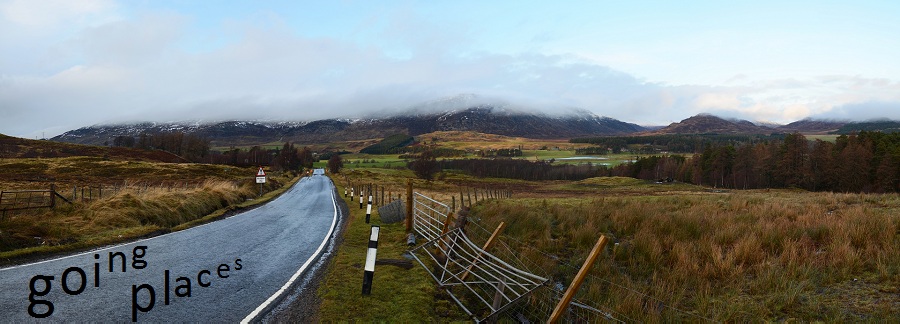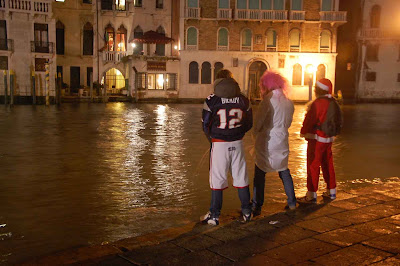
Forte Verena is located on the highest peak of the Asiago Plateau, roughly 2,000 meters above sea level. It is part of the series of fortifications built by the Italians along their northern borders before WWI as a protection against any attacks by the Austro-Hungarians (despite being "allies"), as a retaliation for Italy's claim to Trentino, Alto-Adige, and Friuli-Venezia. During its construction, Forte Verena was top-of-the-line, made to withstand any known forms of bombardments during the time. However, WWI was significant in human history as the first modern war, and the construction technologies introduced in Fort Verena were some of the many techniques that were laid to waste by this new way of waging war.
On May 24, 1915, the first fires shot by the Italians during the war were from Fort Verena, directed at Fort Luserna, a corresponding fortification by the Austrians across the valley. The higher elevation afforded the Italians commanding views of their targets, but poor weapons caused more civilian casualty in nearby Lusern than military gain. For months, the Italians bombarded the surrounding Austrian forts from this commanding position, while being met with a sizeable but not as effective artillery response from the Austrians. Ground troops were also involved during the battle, but the mountainous terrain made any significant advances for both sides impossible. In addition, the Italians had to contend with scrappy yet determined volunteers on the Austrian side aided by snipers from the Meraner Standschutzen battalion who were able to exploit the terrain for their advantage.
The situation didn't break for the Austrians until the following summer, with the introduction of the M11 and some really big Howitzers, which were able to produce greater damages at further distances. Within three months, the Austrians have destroyed and captured all Italian fortifications that were keeping the Austro-Hungarian advance to Asiago. Ground forces pushed the Italians all the way back to Asiago, stopping only due to lack of logistical support, partly due to the severe supply depletion caused by the Austrians' obsessive need to capture every mountaintop...a worthy tactic but one made irrelevant by bigger, more destructive guns and a tendency to destroy everything for the sake of winning. (The ultimate challenge to this tactic was in Pasubio, when the Austrians simply completely blew-up an entire mountaintop instead of trying to capture it.) From there, the Italians were on the defensive for most of the war as they try to stop the Austrians from advancing down towards Vicenza and across the Po Delta. The Italians were only able to completely push the Austrians back and recapture their forts with the Armistice of 1918.



*******************************
It felt silly to go hiking through the snow in the mountains when the sun is shining and it's 70 degrees Fahrenheit in the plains below, but I would say this is actually the best time to do it. First off, it's not so cold, so short sleeves are completely acceptable. Second, the weather is less wont to turn violent and dump many inches of snow while one is outside. Third, the silence.


Finally, it's nice to be reminded that spring has arrived even if one doesn't really need to be reminded. I don't know what these little flowers are, but they, along with daffodils, were common sights whenever there is a clear patch of ground.
We actually hiked along and through the Verena ski trails, which were empty enough to be traversed on foot (not recommended during high season, when doing so can result in heavy fines). The trails gave me an idea: skiing! I know it is very late in the season, but I wouldn't mind enjoying some slopes in short summer clothes!
 A three-hour drive from the nearest big Italian city through amazing coastal mountain roads and isolated farms and wilderness, Plitvicka falls is worth the travel, even in the middle of winter. Formed by 16 lakes dammed by plant materials naturally deposited by the water's current, the lakes and the waterfalls were inscribed into the UNESCO World Heritage Site in 1979. It's a beautiful and magical landscape to walk through, but it wasn't always like that: it was the place where the Croatia war for independence started and ended. This place must hold a spell over people, willing to fight and start a war over something that is for all intents and purposes pools of water spilling over each other. But to be there is to really appreciate the power of such a place to entrance.
A three-hour drive from the nearest big Italian city through amazing coastal mountain roads and isolated farms and wilderness, Plitvicka falls is worth the travel, even in the middle of winter. Formed by 16 lakes dammed by plant materials naturally deposited by the water's current, the lakes and the waterfalls were inscribed into the UNESCO World Heritage Site in 1979. It's a beautiful and magical landscape to walk through, but it wasn't always like that: it was the place where the Croatia war for independence started and ended. This place must hold a spell over people, willing to fight and start a war over something that is for all intents and purposes pools of water spilling over each other. But to be there is to really appreciate the power of such a place to entrance.  My visit to the park was somewhat of an unintended sidetrip gone right. New Year's Eve was (mistakenly) celebrated in Zagreb, Croatia's capital. Having nothing to do the next day, the decision was made to drive to the park, a mere two and a half hours away. (The windy mountainous roads made it more like four hours.) Arriving to the park, we realized that it remained popular with the locals, who took advantage of the lack of patrols by entering through the unguarded sides for free. The situation may be different in the summer, when the park's popularity (visitors reaching almost a million) surely forces the park administration to put in more guards to ensure everyone pays the exorbitant $25 fee.
My visit to the park was somewhat of an unintended sidetrip gone right. New Year's Eve was (mistakenly) celebrated in Zagreb, Croatia's capital. Having nothing to do the next day, the decision was made to drive to the park, a mere two and a half hours away. (The windy mountainous roads made it more like four hours.) Arriving to the park, we realized that it remained popular with the locals, who took advantage of the lack of patrols by entering through the unguarded sides for free. The situation may be different in the summer, when the park's popularity (visitors reaching almost a million) surely forces the park administration to put in more guards to ensure everyone pays the exorbitant $25 fee. 
 The park must be very beautiful in the spring and summer. Based on the pictures one can see online, the landscape is more verdant and more fantastic. The water's blue, vegetation's green, the rocks' brown, and the mist rising from the water blend to make what surely seems to be a hallucination.
The park must be very beautiful in the spring and summer. Based on the pictures one can see online, the landscape is more verdant and more fantastic. The water's blue, vegetation's green, the rocks' brown, and the mist rising from the water blend to make what surely seems to be a hallucination.  But winter itself is not bad. Other than not being too crowded, the place becomes a winter wonderland of frozen waterfalls, snowy bridges, branches covered in ice, and the intermittent snow. Instead of a hallucination, one is surrounded by the eery silence and harsh reality of a landscape in hibernation. Of course, it didn't help that the trails were completely iced over, and walking past especially the taller falls and holding onto the measly wooden branch handrails was in itself a gamble.
But winter itself is not bad. Other than not being too crowded, the place becomes a winter wonderland of frozen waterfalls, snowy bridges, branches covered in ice, and the intermittent snow. Instead of a hallucination, one is surrounded by the eery silence and harsh reality of a landscape in hibernation. Of course, it didn't help that the trails were completely iced over, and walking past especially the taller falls and holding onto the measly wooden branch handrails was in itself a gamble. 
 On the other end of the park however is a New Year's Day party thrown by the park for the brave souls who decided to come. Free music, free food, and woodcutting competitions--the festive atmosphere completely makes up for the party that Zagreb promised but did not deliver. Some people however quite obviously were having too much fun...
On the other end of the park however is a New Year's Day party thrown by the park for the brave souls who decided to come. Free music, free food, and woodcutting competitions--the festive atmosphere completely makes up for the party that Zagreb promised but did not deliver. Some people however quite obviously were having too much fun... (It is illegal to swim in the lakes, by the way. But these two drunk guys just got dirty looks and a stern finger wagging, nothing more. )
(It is illegal to swim in the lakes, by the way. But these two drunk guys just got dirty looks and a stern finger wagging, nothing more. ) The ticket at that day were actually discounted because the ferries were purportedly not running. But after we made it past the party towards the docks, we were surprised that the boat was running, after all. Although it didn't go to the very opposite of the park like it usually does, we were nevertheless able to see the park from the water, as it is supposed to be enjoyed.
The ticket at that day were actually discounted because the ferries were purportedly not running. But after we made it past the party towards the docks, we were surprised that the boat was running, after all. Although it didn't go to the very opposite of the park like it usually does, we were nevertheless able to see the park from the water, as it is supposed to be enjoyed. 



















 There were those
There were those 
















